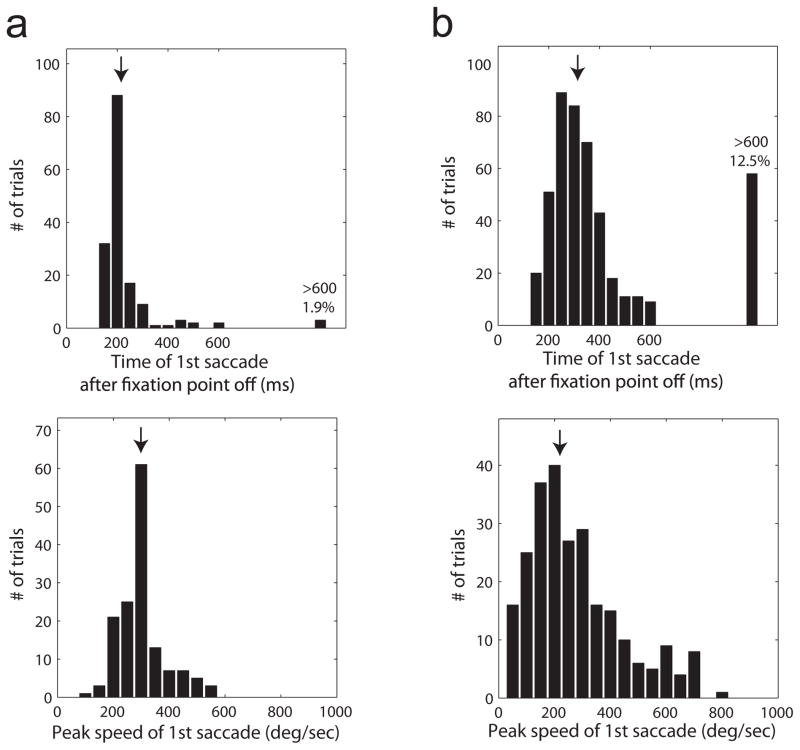Extended Data Figure 9. Summary of first saccade latency and peak velocity in monkeys T and W which together contributed the majority of the recorded data.
a, Top panel: Histogram of latency of first saccade after fixation point termination in 3 neurons (158 trials) in monkey W. Arrow indicates median latency (217 ms). In 1.9% of the trials no saccade was detected in the 600 ms after fixation point termination. Bottom panel: Histogram of peak eye velocity for first saccades during the 600 ms after fixation point offset. Arrow indicates median peak velocity (292 deg/sec). b, Results from 8 neurons (464 trials) in monkey T. Same format as (a). Median latency is 314 ms and median peak velocity is 229 deg/sec. Monkey W tended to make larger saccade away from fixation while monkey T tended to make smaller saccade and in a small subset of the trials remained close to the fixation point location until the next trial was initiated. This may reflect the fact that the minimal inter-trial interval was shorted in monkey T than in monkey W. The short latency of the saccades following fixation point termination in the vast majority of the trials indicates that both monkeys were alert and attentive and were actively engaged in maintaining tight fixation.

